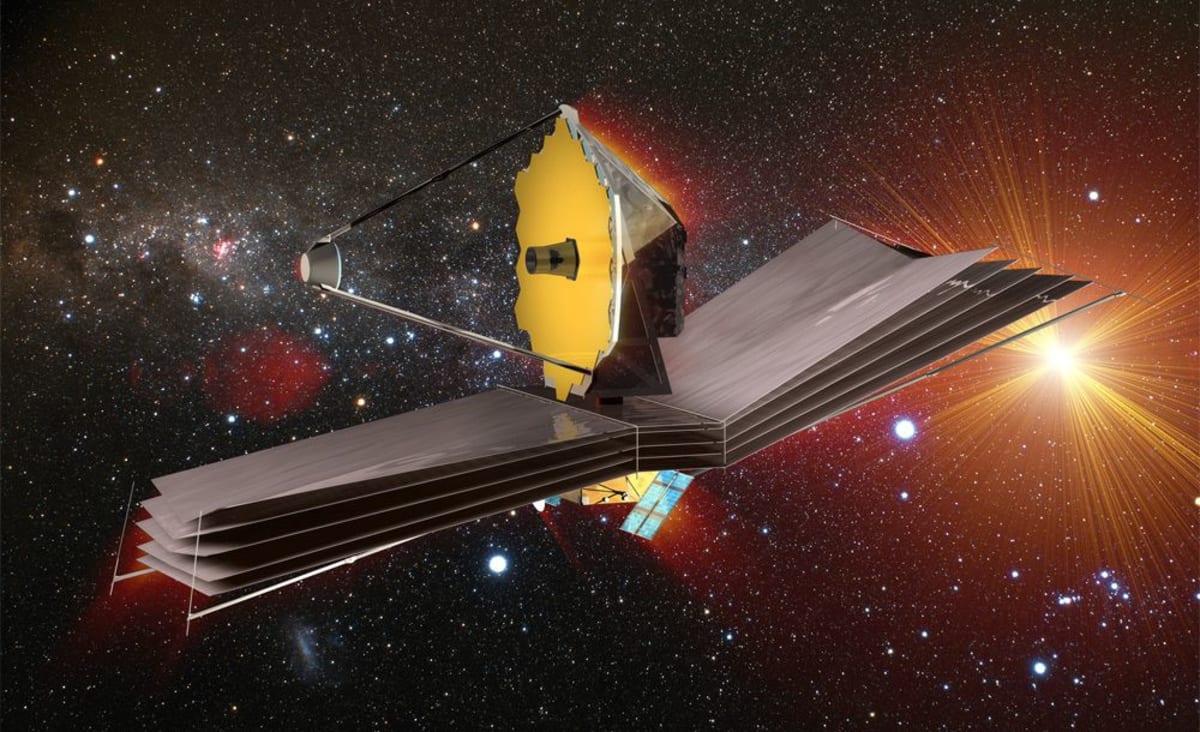
www.space.com
How NASA's James Webb Space Telescope will get ready for its first cosmic observations
With NASA's newest space observatory exactly on schedule in its commissioning phase, the science team outlined their plan to make the most of this $10 billion opportunity.
Science & Tech
With NASA's newest space observatory exactly on schedule in its commissioning phase, the science team outlined their plan to make the most of this $10 billion opportunity.
The James Webb Space Telescope arrived days ago at its destination at the Earth-sun Lagrange Point 2 (L2), which is about 930,000 miles (1.5 million kilometers) away from our planet.
The principal investigators of the Webb science team outlined their plan in a town hall Friday (Jan. 28) hosted online by the Space Telescope Science Institute (STScI) in Baltimore.
With NASA's newest space observatory exactly on schedule in its commissioning phase, the science team outlined their plan to make the most of this $10 billion opportunity.
The James Webb Space Telescope arrived days ago at its destination at the Earth-sun Lagrange Point 2 (L2), which is about 930,000 miles (1.5 million kilometers) away from our planet.
The principal investigators of the Webb science team outlined their plan in a town hall Friday (Jan. 28) hosted online by the Space Telescope Science Institute (STScI) in Baltimore.
Jonathan Gardner, Webb deputy senior project scientist at NASA Goddard Space Flight Center in Greenbelt, Maryland, walked through the last few months of preparations before giving a brief update on how things are going in orbit. In a few words, everything is going to plan, he noted.
"There were 50 major deployments; they have all been successful," he said of the telescope's mirror unfolding, as an example of the major milestones Webb achieved.
Meanwhile, amateurs and professionals alike area already sending back data from backyard observatories and professional locations. For example, he said, people have also been taking "light curves" at places such as the National Science Foundation's Green Bank Telescope.
Webb's brightness changes in a repeatable six-hour cycle as the observatory's solar array reflects a glint of sunlight back towards the Earth, during its regular spin, Gardner said. "The sunshield reflects the sunlight directly at the Earth, and [sometimes] has a glint and at other times, it's more diffuse light," Gardner said
"We'll be aligning the telescope; that's about a three month process that we're planning to begin early next week," he said, noting that optical performance of the telescope will be assessed to (among other things) determine the amount of stray light being produced by the optics.
Optical commissioning will include several complex steps — sometimes sequentially and sometimes iteratively — such as identification of images, aligning different mirror segments, and eventually phasing the segments to within a fraction of a wavelength, McElwain noted.
To guide mirror alignment, the Webb team will focus each of the 18 primary mirror segments on a bright, distant star called HD 84406, which is part of the constellation Ursa Major ("the Great Bear").
























































